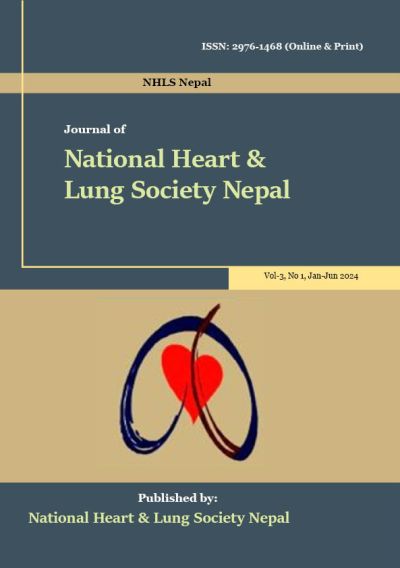Computed Tomography Findings in Acute Stroke Patients in a Tertiary center
DOI:
https://doi.org/10.3126/jnhls.v3i1.64322Keywords:
stroke, computed tomographyAbstract
Background: Stroke, or "cerebrovascular accident," is a medical disorder in which the brain's cells die due to insufficient blood flow. Successful stroke treatment varies according to the type of stroke, whether an infarct or a bleed, and it can be lethal without brain damage. The study aim was to compare clinical stroke diagnosis with computed tomography (CT) scan findings to determine stroke type (hemorrhagic or Ischemic).
Methods: This is a descriptive cross-sectional type of study conducted at the Department of Radiology & Imaging in a diagnostic center at central Nepal from December 2023 to February 2024. A total of 120 patients from the inclusion criteria were taken for the study purpose. Data of clinical diagnosis were compared individually with CT findings.
Results: Out of 120 patients, 76 were males and 44 were females and they were in the age range of 40 to >70 years. Clinically 59 patients were suspected to have Inermediate (hemorrhagic) infarct, 44 acute cerebral infarct and 17 Intra cerebral hemorrhage. CT scan of the brain showed 58 acute cerebral infarct, 36 Hemorrhagic infarct, 15 Intra cerebral hemorrhage and 7 Space occupying lesion.
Conclusion: The study found that CT should be the first thing to do when a person has a stroke because it's easy, quick, and accurate at figuring out infarct and hemorrhage which decides the treatment at a glance.




